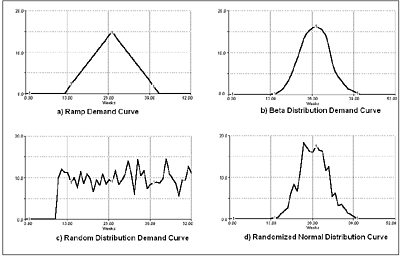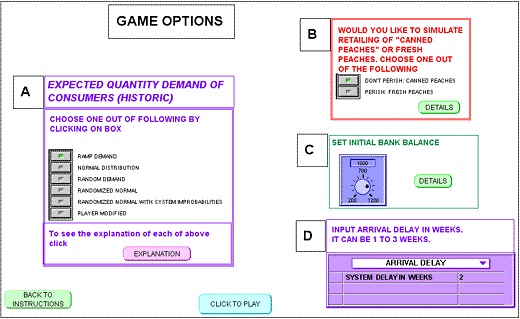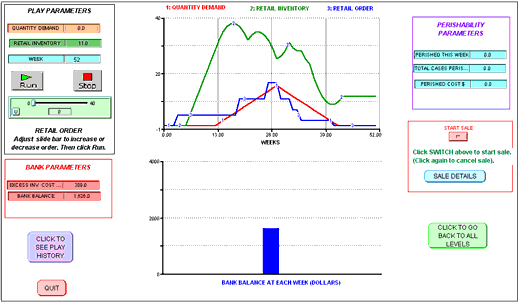| 1. | Introduction | ||||||
|
|||||||
| 2. | Methodology | ||||||
| 3. | The Game
|
||||||
| 4. | Feedback | ||||||
| 5. | Debriefing and Discussion | ||||||
| 6. | Conclusions | ||||||
| 7. | Acknowledgements | ||||||
| 8. | References |
![]()
Simulation Game for Peach Retail Ordering Systems
Deepak
Aggarwal,
University of Georgia
Stanley E. Prussia, University of
Georgia
Wojciech
J. Florkowski, University
of Georgia
Don Lynd, AMS, United States
Dept. of Agriculture
Abstract
Despite
the progress in the development of simulation games and models for training
in many areas, the post harvest produce sector seldom has been a subject
of instructional tools. A computer-mediated simulation game for this objective
was developed in the Windows environment. It uses Stella software (www.iseesystems.com)
to model the system and to develop the simulation equations. The game,
developed with the complicated needs of the produce sector in mind, combines
systems dynamics and systems thinking
to model
and simulate the essential elements responsible for meeting consumer demand.
The player assumes the role of a retailer, striving to minimize inventory
without running out of an item. The player selects a consumer demand from
various deterministic and stochastic consumer demand options. Players are
challenged by delays in produce delivery (two weeks) and perishability
of the produce. Tension is caused by conflicting objectives, such as
running out of produce or avoiding the penalty resulting from excess inventory.
If required, the player can reduce his excess inventory by exercising his
option of putting produce on "sale." The bank balance shows
the impact of the decisions made. Players are surprised by the difficulties
encountered for maintaining low inventories while maintaining an uninterrupted
supply, even at the easiest level. The simulation emphasizes the importance
of produce ordering based upon deterministic and stochastic portrayals
of consumer demand, the delays in produce delivery by the system, perishability,
and a measure of financial assessment of the retailer's performance. The
game provides a participatory, hands-on experience for understanding the
concepts and for developing skills desired in post harvest fresh produce
businesses. The game was used as a tutorial for an undergraduate university
course on food science and at three international symposiums. It
was also played by high school students and by a produce manager at a major
grocery. It can be used as a teaching tool by marketing, postharvest engineering
and biology students and as a training tool by produce department personnel
in retail outlets to understand the dynamics of supply chains in the post
harvest marketing system.
![]()



